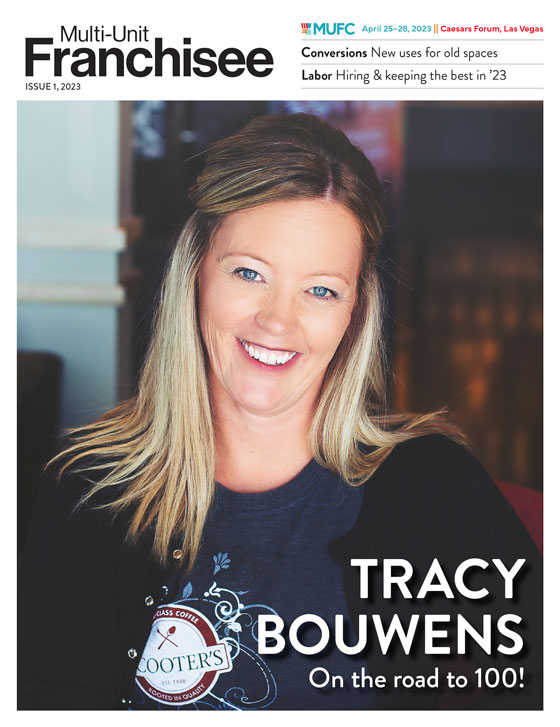Investing Lessons from 2022: Stay calm and look to the long term

When most global market averages hit all-time highs on January 3, 2022, few expected the traumatic year that unfolded. Not since the 1930s have both stock and bond markets engaged in simultaneous bear market declines, leaving investors with few places to hide.
Thanks to a perfect storm of unusual events—Russia’s invasion of Ukraine; an unexpectedly strong reversal in consumer preferences for services over goods; trillions in fiscal stimulus pumped into the U.S. economy; suddenly hawkish central bankers playing catch-up with runaway inflation; and China’s zero-tolerance Covid lockdowns—C-suite planners were left reeling, trying to respond to acute supply and demand disruptions throughout their operations.
As if unpredictable corporate fortunes weren’t enough for investors, inflation soared, markets tanked, crypto crashed, SPACs imploded, the IPO market froze in its tracks, and central banks pushed policy rates from zero (or less than zero) to near 5%.
On the other hand, supply chains eased, consumers spent aggressively, citizens were employed with options, the financial system was in solid shape, capital spending rebounded, and a variety of new growth industries (EVs, batteries, space, healthcare) received funding and interest. It was a year fraught with contradictions, leaving investors scratching their heads and licking serious wounds.
Amid the turmoil, some aspects of how market participants reacted are not without precedent, even if the events themselves were unique. The headlines may change, but humans are still at the helm pulling the buy and sell levers. When confronted with uncertainty and unexpected events, our wiring pushes us toward largely predictable fight, flight, or freeze reactions. Such wiring often makes investors their own worst enemies, causing them to run for cover when headlines turn scary, or to ignore warning signs when emotions are ebullient. Remember the frenzy over SPAC and crypto assets 18 months ago? Contrast that with the emotional, 1,000-point single-day swing triggered by an unexpected CPI report and it becomes clear that, in the short run, markets are anything but rational. In the hope they may prove helpful navigating the volatility that may remain for investors in 2023, here are a few lessons from the year just ended,
First, keep calm. Headlines all year often had interpretations that could be perceived as both good and bad. Amid such daily whipsawing, it’s important to keep thinking intermediate to long term. If headlines are overwhelmingly worrisome, where are there pockets of good that are being ignored? In the U.S., for example, significant dollars are being teed up by approved fiscal spending initiatives in support of green energy, infrastructure refurbishment, space force enhancement, battery technology, cybersecurity, Wi-Fi and EV charging station buildout, new health care supports, etc.
Companies across the board are moving proactively to right-size costs, diversify supply chains, and pivot operations to changing consumer preferences. Higher interest rates initially tanked many segments of fixed-income markets, but as they stabilize interesting opportunities are afoot in places that overcompensated or over-discounted how high or fast rates would go. It’s important for long-term investors to stay calm and think long term, rather than be swayed by social media echo chambers and 24/7 news cycles.
Dig deeper into structural reasons that certain asset classes may be performing better or worse than underlying fundamentals would suggest. For example, throughout 2022 record amounts were pulled out of bond funds, pushing prices lower than the mere upward move in interest rates would have dictated. This forced portfolio managers to sell their highest-quality, most-liquid securities first, often at steep discounts. Buyers of those bonds ended up upgrading the quality and yield of their portfolios. In short, use volatility prompted by surprise to search out pockets that have over-discounted potential outcomes.
“Don’t just do something, sit there.” Numerous studies show that those who trade more often tend to have worse performance over time, particularly when frictional costs (taxes, fees, transaction expenses) are considered. This isn’t necessarily a philosophy of buy and hold with no reevaluation, but a reminder to remain calm, evaluate critically, and not make decisions on the spur of the moment. Write down your investment objectives, framing them as ranges of strategic core asset class representation in “normal” markets. Then move to one end or the other of those ranges based on relative shifts in valuations and outlook. Dialing up or down exposure by dollar cost averaging can help as well.
That said, look for opportunities to upgrade the quality, timing, yield, and/or long-term positioning of your holdings. Trading in the early days of a meltdown is often not advisable. Waiting for the dust to settle and finding hints of a long-term direction to come clear may work in your favor.
The early days of Covid were a classic opportunity, as was the Brexit vote in 2016. Both events caused sudden and rapid repositioning against an overall healthy economy, and bottoms were found relatively quickly. In the current situation, it has been more difficult to tell if or when the bottom has been neared, as fundamentals are in unusual territory and have been whipsawed multiple times to the upside and downside.
This trading range or “backing and filling” process is likely to go on for some time as economic fundamentals play out and investors, consumers, and businesses anchor to higher levels of inflation and interest rates. That process, though, seems to have established intermediate-term boundaries in this range, allowing those with the financial and stomach-lining wherewithal an opportunity to seek opportunities in high-quality assets whose prices are substantially cheaper than they were a year ago.
Carol Schleif is deputy chief investment officer at BMO Family Office, a wealth management advisory firm delivering investment management services, trust, deposit, and loan products and services through BMO Harris Bank. To learn more visit bmofamilyoffice.com.
Share this Feature
Recommended Reading:
FRANCHISE TOPICS
- Multi-Unit Franchising
- Get Started in Franchising
- Franchise Growth
- Franchise Operations
- Open New Units
- Franchise Leadership
- Franchise Marketing
- Technology
- Franchise Law
- Franchise Awards
- Franchise Rankings
- Franchise Trends
- Franchise Development
- Featured Franchise Stories
FEATURED IN

Multi-Unit Franchisee Magazine: Issue 1, 2023

$500,000
$500,000





 The multi-unit franchise opportunities listed above are not related to or endorsed by Multi-Unit Franchisee or Franchise Update Media Group. We are not engaged in, supporting, or endorsing any specific franchise, business opportunity, company or individual. No statement in this site is to be construed as a recommendation. We encourage prospective franchise buyers to perform extensive due diligence when considering a franchise opportunity.
The multi-unit franchise opportunities listed above are not related to or endorsed by Multi-Unit Franchisee or Franchise Update Media Group. We are not engaged in, supporting, or endorsing any specific franchise, business opportunity, company or individual. No statement in this site is to be construed as a recommendation. We encourage prospective franchise buyers to perform extensive due diligence when considering a franchise opportunity.